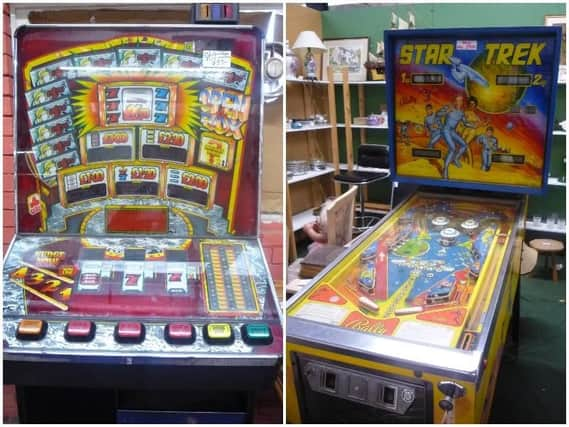What to look for in the craze for collecting pinball machines


The sounds of the bells ringing and lights flashing takes me right back to time in the ‘slotties’ on the pier. It’s a perfect nostalgic collectable to feature for the bank holiday weekend.
Most people have played on a pinball machine at some time in their life. Even within the current generation of gaming enthusiasts, some are finding slick, modern computer games lack the appeal of a mechanical machine and interest in collecting, restoring and playing these lovely items is rapidly growing.
Advertisement
Hide AdAdvertisement
Hide AdOne of the most important manufacturers is Bally. Founded in Chicago in 1932, the Bally Corporation was started by Raymond T Moloney, with a small wooden pinball machine named the Ballyhoo.
The corporation helped popularise the now iconic flippers, the first appearing on a ‘Humpty Dumpty’ machine in 1947. With machines becoming ever more elaborate, Bally continued this chain of innovation in both pinball and slot machines and they remain a key name in the field of arcade entertainment.
Unfortunately, due to changes in trends and technology, especially in the 1970s, machines were swiftly upgraded and replaced, with old machines simply broken up and dumped. However they are out still there, and with the resurgence in interest, there are several key points to bear in mind for the prospective collector.
Pinball machines are big beasts, often weighing hundreds of pounds, so it’s a case of having the room (dare one say a ‘man cave’ in the garage?) Also bear in mind if you are likely to move home at any point, as they combine a challenging mix of weight and size with intricate fragile inner components.
Advertisement
Hide AdAdvertisement
Hide AdVintage arcade and pinball machines require maintenance in order to look good and work properly. Considering the environments these games were used in commercially, it's not surprising to find them with considerable wear and tear, even gummed-up inside from spilled drinks.
However, this is often the joy of reclamation projects - restoring a damaged collectible to its former glory, and of course increasing its value in the process.
More often than not, pinball machines made by European manufacturers are either unreliable or virtually worthless. It is wise for a collector to source from reliable USA manufacturers such as Bally, Williams, Stern and Sega.
Pinball machines can cost anywhere from £100 up to £10,000 or more. Interestingly, unlike a lot of collectibles, older pinball games generally don't command as much as more recent machines. Most made between the 1960s and 1980s aren’t as valuable as some of the later games, except to a dedicated fan base of this specific era.
Advertisement
Hide AdAdvertisement
Hide AdMost collectors feel the 1990s was the golden age of pinball machines. Advanced technology made it possible for games to use much more complex designs, which made gameplay more fun than in earlier eras. Ones featuring popular films of the time command higher prices, with, for example, Addams Family pinball machines even in poor condition selling for upwards of £5,000.
For those without the space or weight-bearing joists, there are still pinball machines along traditional seafronts, including right here locally in Morecambe, so grab your cup of coins and have a lovely bank holiday weekend.
* Allan Blackburn is the owner of GB Antiques Centre at Lancaster Leisure Park. An antiques enthusiast for more than 25 years, his indoor centre now houses 100 dealers over 40,000 square feet.